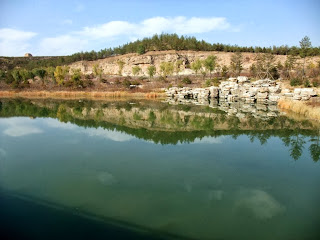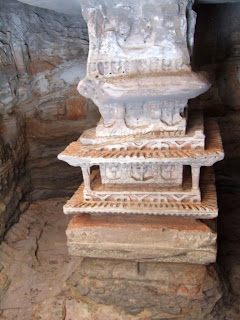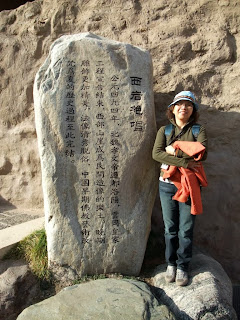
Datong Yungan Grotto (大同云冈石窟) is one of the four greatest Buddhist Grotto in China, sharing the same fame with Dunhuang Mogao Grotto, Luoyang Longmen grotto and Gansu Maijishan Grotto. The site situated in a valley at the base of Wuzhou-shan about 16km south west of Datong City. Yungan Grotto composed of 252 grottoes with more than 51,000 Buddha stone images and statuette, is an excellent Buddhist sculptural site made up from incredible ancient rock-out architecture. It was a master piece of early Chinese stone carving arts from 5th to 6th century, that absorbed Indian Buddhist Arts and developed the sculptures with Chinese cultural tradition. The site was listed in Unesco World Heritage Site in year 2001.



Entrance Gate




This is the place where visitors can watch video show and have a brief introduction of the site.



The entrance building were built in the architectural style of Northern Wei Dynasty (386-534).


Two rows of Monolith engraved with Buddhist images were new structures but nice.









New added structures modernized the ancient site.





The first structure that caught our sight along the walking way to the Grotto, was the temple complex of Lingyan-si (灵岩寺). The old temple site was first found in Northern Wei Dynasty (386-534). It was built on a little island at the heart of a lake with 6 halls and 4 pavilions at 4 corners.


The Thousand Buddha Hall at Temple Linyan-si is reputable for its 800 bronze Buddha images by two sides of its walls.



The 5 tiers square shaped stone pagoda was carved with hundreds and hundreds of Buddha Images. There are 12 main Buddha Images each at four surfaces of the structure with many small niches and Buddhist images engraved at columns and surrounding areas.



Panoramic view of Temple Lingyan-si.


The scenic surroundings where temple Lingyan-si located.


Beautiful sight with reflection of golden hill and rocky land on the lake.



While enjoy walking with the young couple from Henan, whom we shared a taxi with when coming from Datong City, we encountered small unknown temples along the way to grotto site.


We could also admire those complimentary phrases and calligraphy engraved on the stone when strolling towards the site.


It was in fact not too far to get to this little arch gate and arrive at the site.


The first sight of Yungang Grotto.



Cave 1 - 2 were excavated at the same time, during the reign of Emperor Xiaowen-di between years 465-494.


The two caves shared the same design, with a square shape stupa carved at the center of the cave, surrounded by many niches and images.



Some images in the niches had already been weathered.




There are all together 45 Caves with 252 grottoes carved with 1100 niches of different sizes.




The almost ruin images at some of the caves.





The grottoes were excavated along the mountain extending to one km from east to west.





Cave 21-45 and many un-numbered small caves are at the west corner. Many of them were excavated between year 494-525 by private patronage after Wei capital moved out from Datong to Luoyang.






Wall of thousand Buddha


The sculptures at west corner carved by local artisans after year 494 were closer to Han's culture. Images are slimmer and more elegant. The Indian Buddhist Arts had lost its influences after this period.







The musical images at cave 38 at the west corner is a good research material for those who have interested in the acrobatic postures of northern Wei Dynasty (386-534).






Double seated images of Buddha Sakyamuni and Duobao-fo sharing a seat in a niche were found in many caves. This must be a high period when people emphasized Dharma Flower Sutra.






Weather-beaten images at the caves of west corner.




The sculptures at cave 4 were in dilapidated condition




The ruin images.





No comments:
Post a Comment